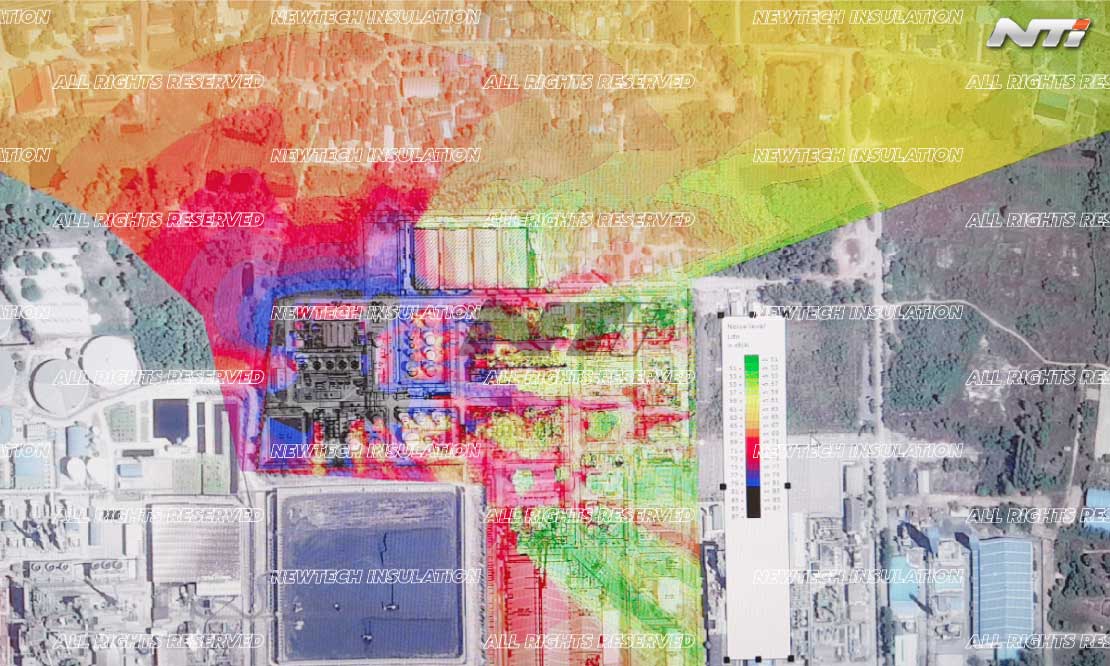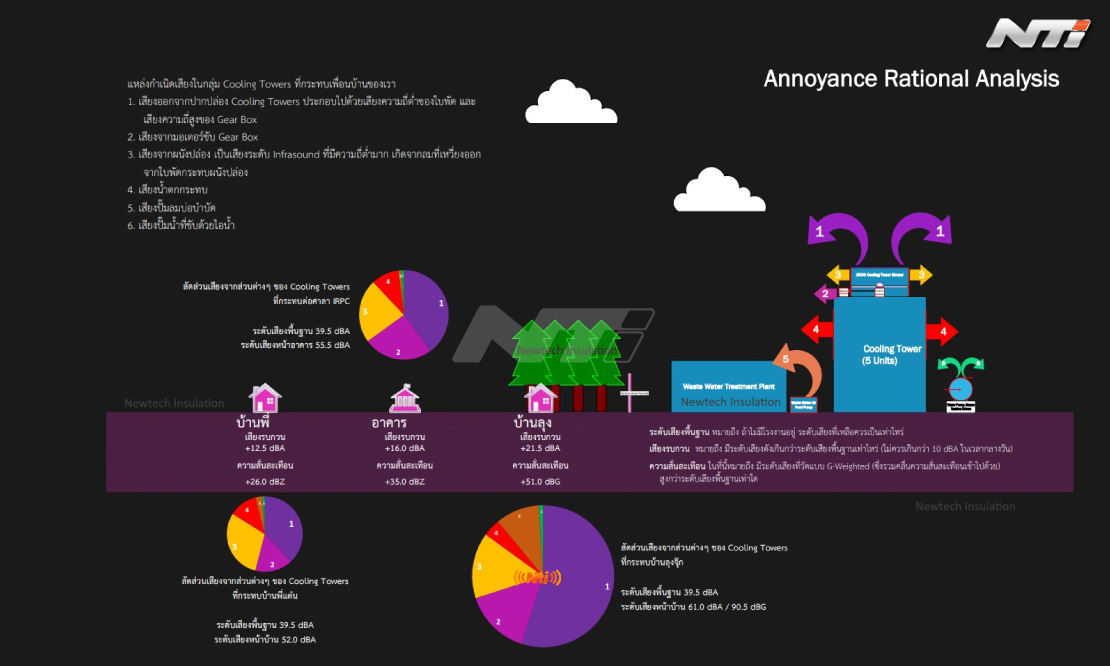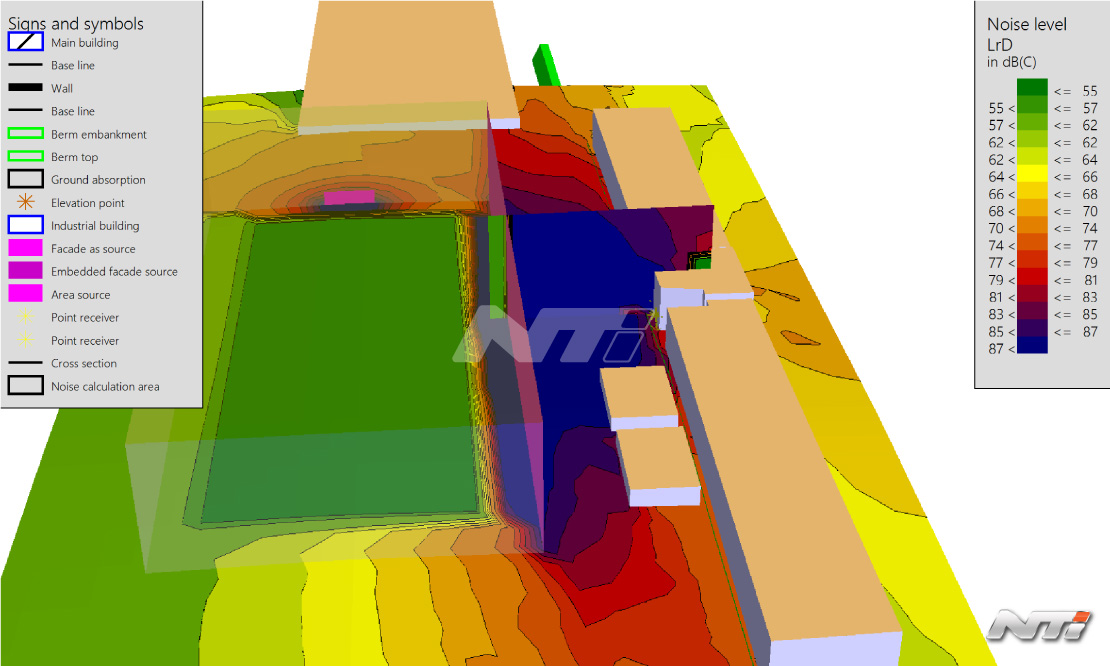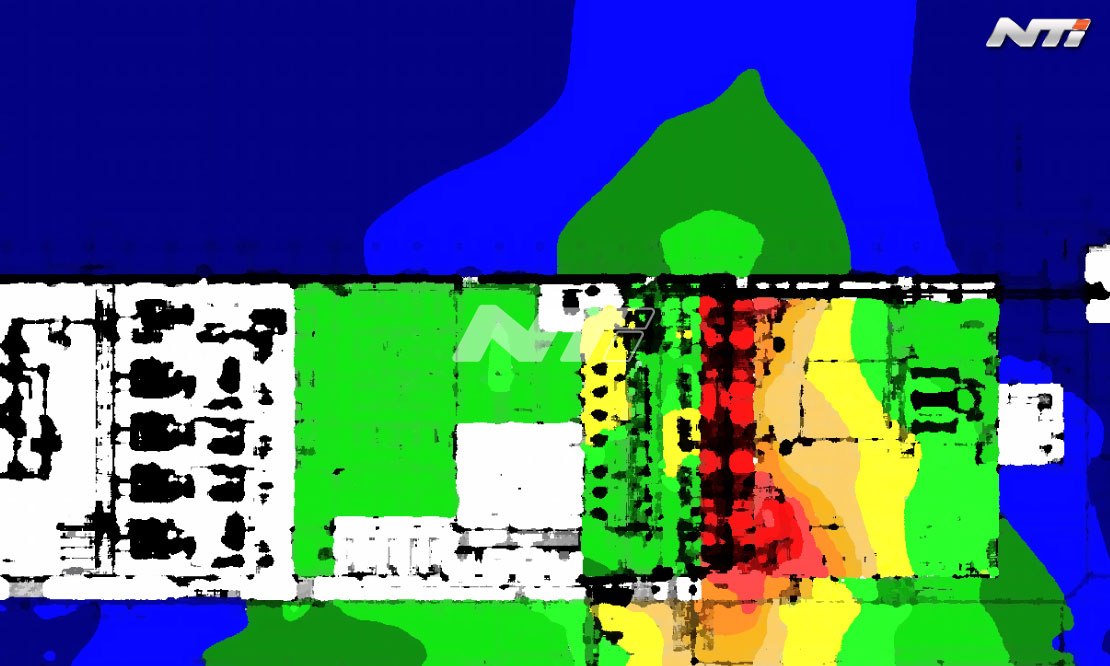บริการแบบจำลองทางเสียง
Noise Simulation Models
เมื่อต้องเจอกับปัญหาด้านเสียงที่ซับซ้อนและมีค่าใช้จ่ายในการปรับปรุงสูง การเลือกวิธีการปรับปรุงต้องแม่นยำและมีประสิทธิผลในการแก้ปัญหาได้จริง จะดียิ่งขึ้นหากผู้เกี่ยวข้องได้เห็นภาพจำลองของระดับเสียงเปรียบเทียบก่อนและหลังการปรับปรุง เพราะเป็นประเด็นสำคัญที่ทำให้การควบคุมเสียงจบลงตามแผนที่ได้หารือและดำเนินการจนประสบความสำเร็จ "แบบจำลองทางเสียง" คือการนำข้อมูลเสียง เช่น ระดับความดันเสียงและความถี่เสียง มาทำการจำลองเป็นสถานการณ์โดยเลือกวิธีการควบคุมเสียงแบบต่างๆผ่านซอฟท์แวร์เฉพาะทางด้านเสียง เพื่อให้ทราบว่าระดับเสียงที่ลดลงหลังจากการปรับปรุงด้วยวิธีการเหล่านั้นให้ผลตามที่คาดหวังและอยู่ในงบประมาณที่จัดเตรียมไว้หรือไม่
หลักการทำแบบจำลองทางเสียง
คือการนำหลักการทางคณิตศาตร์มาใช้ในการประเมินการแพร่กระจายของเสียง จากแหล่งกำเนิดเสียงทั้งแบบจุด (point source) แบบเส้น (line source) หรือแบบพื้นที่ (area source) ว่ามีการกระจายไปในลักษณะใด โดยใช้ข้อมูลที่เกี่ยวข้องของสภาพแวดล้อมบริเวณนั้น เช่น ลักษณะทางกายภาพของพื้นที่ จำนวนแหล่งกำเนิดเสียง ความถี่เสียง ความสูงของแหล่งกำเนิดเสียง อุณหภูมิ ทิศทางและความเร็วลม มาทำการคำนวณร่วมด้วย การทำแบบจำลองทางเสียงสำหรับงานที่ต้องการความแม่นยำสูง ต้องดำเนินการตามมาตรฐานการทำแบบจำลอง เช่น มาตรฐาน EN ISO12354-3:2017 (Building-Acoustic Outside) หรือ General Prediction Method: 2019 (Industrial Noise Standard) เป็นต้น
"แบบจำลองทางเสียง" มีข้อดีดังต่อไปนี้
- ลดการคาดเดาแนวทางการแก้ปัญหามลภาวะทางเสียง
- ลดการโต้แย้งของผู้มีส่วนได้ส่วนเสียจากการไม่มีข้อมูลที่ถูกต้อง
- ช่วยให้การตัดสินใจแก้ปัญหามีความแม่นยำทำได้ตรงประเด็น
- ช่วยให้สื่อสารกับผู้เกี่ยวข้องในการแก้ปัญหาได้เข้าใจง่ายยิ่งขึ้น
- ประหยัดเวลา ค่าใช้จ่าย ทรัพยากรต่างๆที่ต้องนำมาใช้แก้ปัญหา
กลุ่มผู้ใช้บริการ
- ผู้ที่ได้รับความเดือดร้อนรำคาญจากเสียงรบกวน
- ผู้ประกอบการที่เป็นเจ้าของแหล่งกำเนิดเสียง
- เจ้าหน้าที่สิ่งแวดล้อมหรือเจ้าหน้าที่ความปลอดภัยและอาชีวอนามัย
เครื่องมือ
- เครื่องวัดเสียงแบบแยกความถี่ มาตรฐาน IEC 61672 Class-1
- เครื่องกำเนิดเสียง มาตรฐาน IEC 60942 Class-1
- ขาตั้งเครื่องวัดเสียง (Tripods)
- โปรแกรมจำลองด้านคณิตศาสตร์ทางเสียง
สิ่งที่จะได้รับ
- รายงานแบบจำลองด้านคณิตศาสตร์ทางเสียงและแนวทางการควบคุมเสียง




